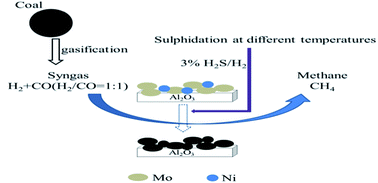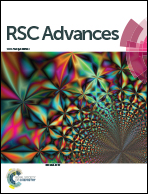Effect of sulphidation temperature on the performance of NiO–MoO3/γ-Al2O3 catalysts for sulphur-resistant methanation
Abstract
The effect of the sulphidation temperature on the activity and selectivity of a NiO–MoO3/γ-Al2O3 catalyst for sulphur-resistant methanation was systematically investigated. The prepared catalysts were subsequently characterised by N2-physisorption, temperature-programmed sulphidation, X-ray diffraction, Raman spectroscopy, X-ray photoelectron spectroscopy, and transmission electron microscopy. The results obtained from characterisation demonstrated that the NiMoO4 species in the NiO–MoO3/γ-Al2O3 catalyst was sulphided when the sulphidation temperature was at or above 300 °C. Evaluation of the catalysts in sulphur-resistant methanation from syngas indicated that the sample sulphided at 400 °C has the highest likelihood of possessing a greater NiMoS type I structure. The catalytic activity decreased when the sulphidation temperature was above 400 °C. This decrease was primarily caused by the formation of MoS2 crystals and the progressive transformation of the NiMoS phase with increasing sulphidation temperature. The NiMoS type II structure did not display good performance for sulphur-resistant methanation because it resulted in the over-sulphidation of the NiMoS structure to form crystalline MoS2, which exhibited lower methanation activity.


 Please wait while we load your content...
Please wait while we load your content...